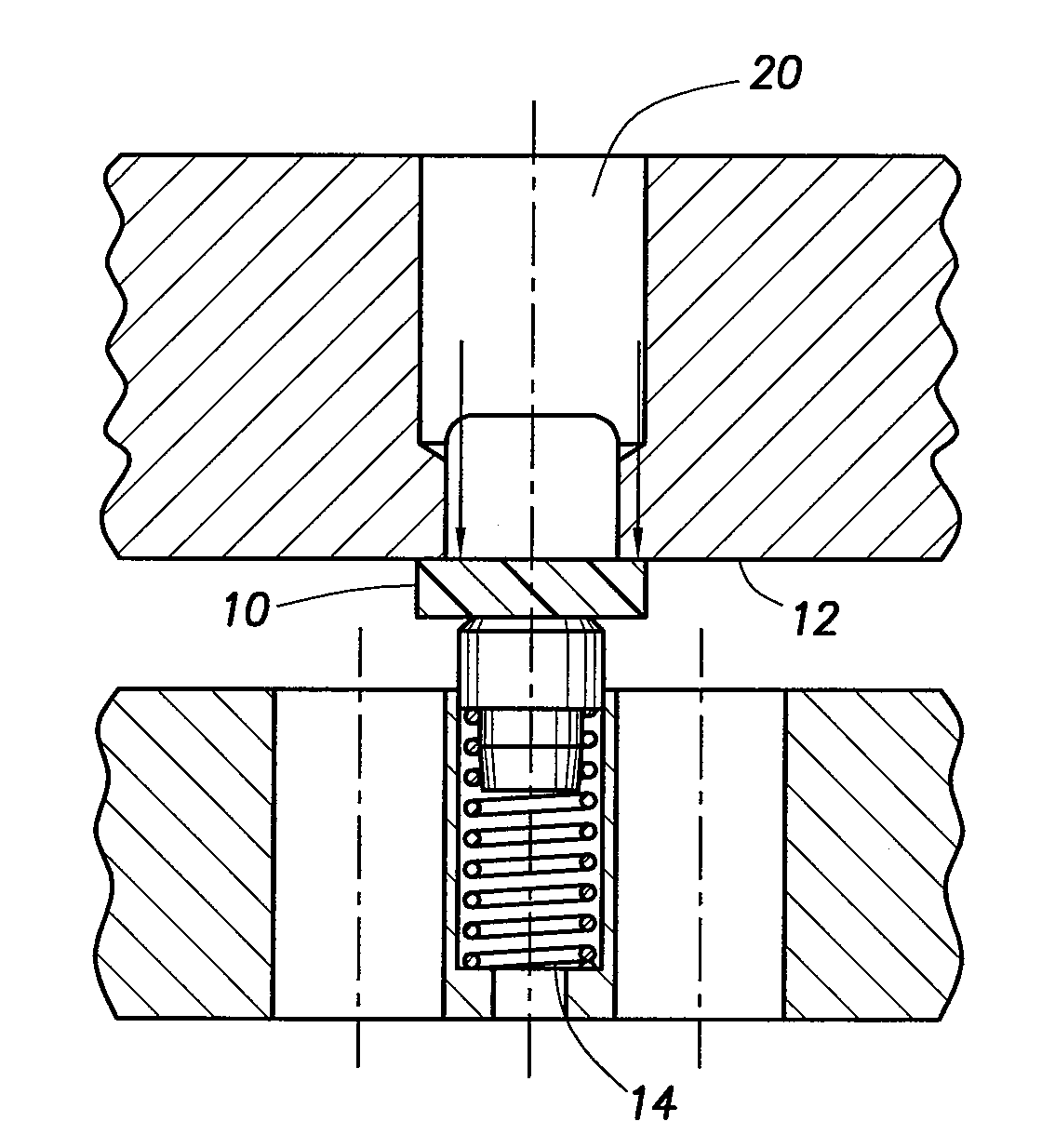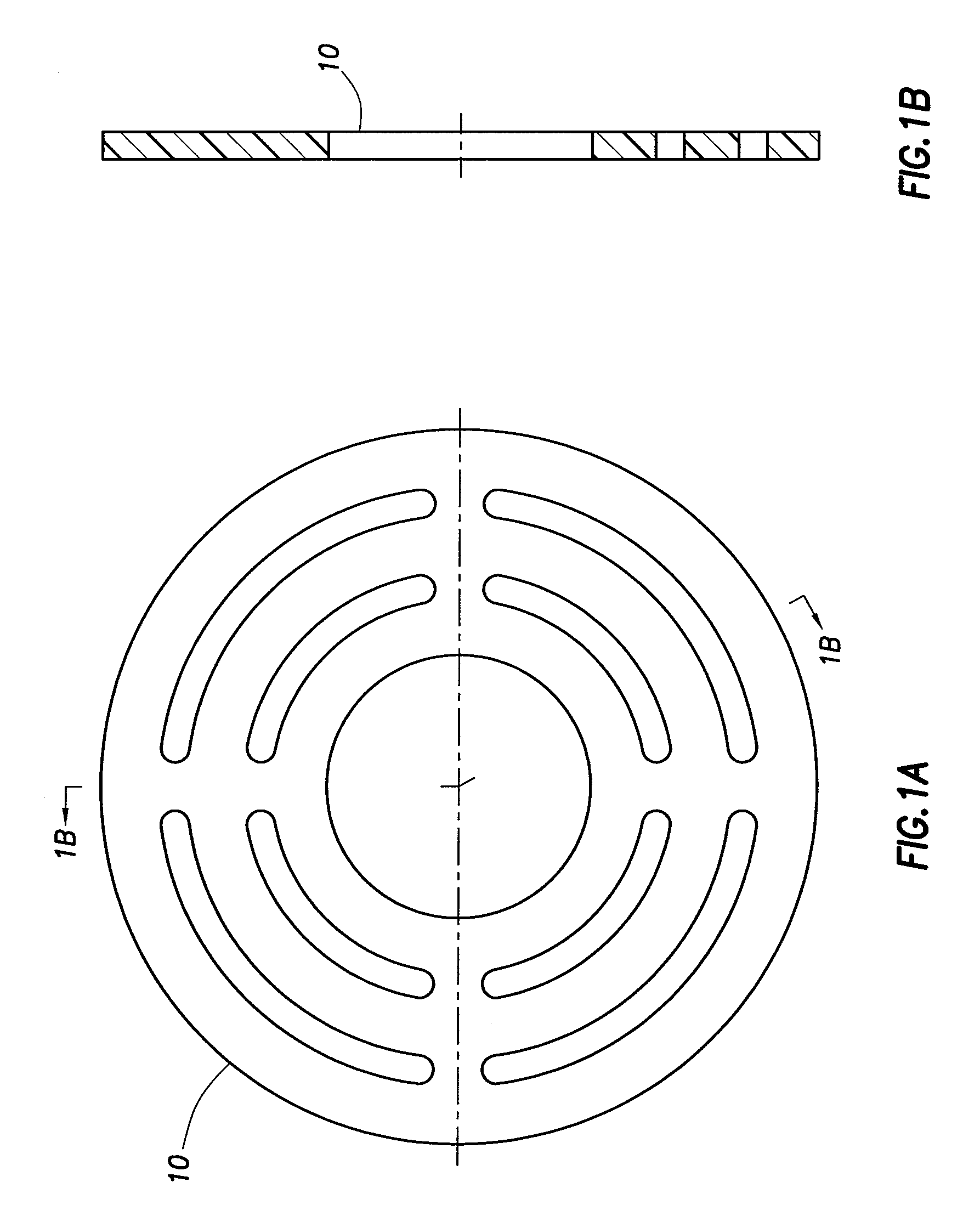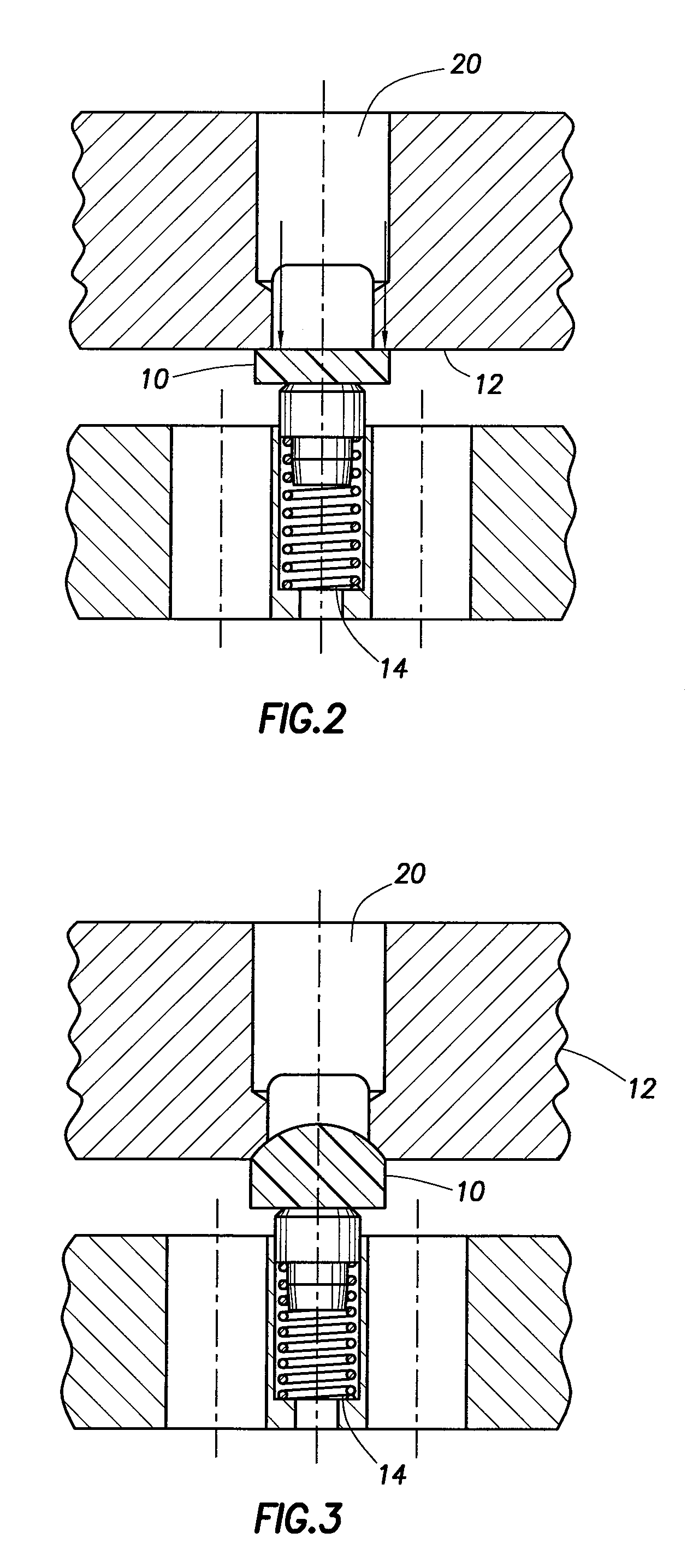Elastomeric Sealing Element for Gas Compressor Valve
a technology of gas compressor valve and sealing element, which is applied in the direction of machines/engines, liquid fuel engines, positive displacement liquid engines, etc., can solve the problems of reducing the ability of the valve to form a gas tight seal for extended periods of time, and affecting the service life of the compressor valve. , to achieve the effect of improving the service life of the compressor valve, reducing the potential of impact damage, and improving the sealing
- Summary
- Abstract
- Description
- Claims
- Application Information
AI Technical Summary
Benefits of technology
Problems solved by technology
Method used
Image
Examples
example 1
[0099]As a first field test, a 1400 rpm Ariel reciprocating gas compressor was used in gas gathering service. This machine is desirable for testing the sealing element of the subject invention because of its rotating speed. A large number of opening and closing cycles may be accumulated in a short period of time. In this initial test, 90 durometer fluoro-elastomer, Mosites was applied to a nylon disk and used in a MOPPET® valve. The materials ran for six (6) days before failure occurred. Inspection of the parts indicated that the nylon base material melted and subsequent deformation of the parts and loss of seal, resulted in overheating and forced a shutdown of the compressor.
[0100]Nylon is no longer being used as a base material. PEEK has been applied as a result of its ability to operate at higher temperatures. The same elastomeric material, Mosites, was applied to the PEEK disks and the parts were run again. The parts ran for about 205 days before failure occurred. The standard p...
example 2
[0101]In the first test of the urethane material, the material failed in four (4) days and inspection revealed that the bond between the urethane and the PEEK material permitted the urethane to separate from the PEEK at discharge temperatures. In addition, the PEEK used in this test had been colored black by the addition of carbon which has the detrimental effect of making the thermoplastic material slippery. The MOPPET® valve parts were essentially undamaged but it was clear the bonding chemical between the urethane and the plastic allowed the urethane to separate. The suction valves were intact and in good condition because the suction temperatures are much lower than discharge temperatures. It seemed clear that the bonding agent had temperature limitations. Other bonding agents capable of withstanding higher temperatures must be utilized.
[0102]It should be noted that the standard valve (without the use of elastomeric material) began to overheat in only a few hours before having t...
example 3
[0103]In this example, the reciprocating gas compressor operated at a rather low compression ratio and the temperatures were low and the urethane sealing element applied to standard (non-black) PEEK ran continuously for over 100 days without problems. This provided the evidence that bonding materials are temperature sensitive. Adhesives and primers able to withstand higher temperatures and new radiused valve seats (surface vs. line contact) were installed. Compressor specifications were as follows:
Suction Pressure = 503 psiDischarge Pressure = 783 psiSuction Temperatures = 106° F.Discharge Temperatures = 169° F.Sealing ElementRPM = 327Travel = 0.120 inchesGas:75.5% HydrogenCompressor: Cooper JM-319.5% Methane 3.1% Ethane
PUM
| Property | Measurement | Unit |
|---|---|---|
| temperature | aaaaa | aaaaa |
| elongation | aaaaa | aaaaa |
| piston speeds | aaaaa | aaaaa |
Abstract
Description
Claims
Application Information
 Login to View More
Login to View More - R&D
- Intellectual Property
- Life Sciences
- Materials
- Tech Scout
- Unparalleled Data Quality
- Higher Quality Content
- 60% Fewer Hallucinations
Browse by: Latest US Patents, China's latest patents, Technical Efficacy Thesaurus, Application Domain, Technology Topic, Popular Technical Reports.
© 2025 PatSnap. All rights reserved.Legal|Privacy policy|Modern Slavery Act Transparency Statement|Sitemap|About US| Contact US: help@patsnap.com



